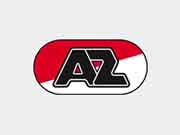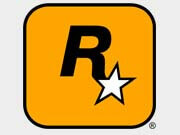Frequently Asked Questions
-
Why is the result set smaller than the amount I requested?
The amount of possible unique codes is determined by the selected length and charactersets or by the selected pattern.
It is impossible to generate more unique codes than this amount.By unchecking the "Remove look-a-likes" box you will probably get a somewhat larger result set. If this still is not enough, increase the length, selected charactersets or pattern to allow a larger amount of possible unique codes.
-
Why are large result sets always saved as a CSV file?
Most browsers have problems displaying large amounts of text, which might cause them to become unresponsive.
To avoid this, large result sets (more than 1.000 results) are offered as a downloadable Comma Seperated Values (CSV) file, which can be openend in most plain-text editors as well as in Microsoft Excel or similar programs. -
Should I use "Generate using characterset" or a "Generate using pattern"?
If you need codes of a specific length containing characters of a different types (uppercase, lowercase, digits, ...) you should "Generate using characterset". Codes like this are typically used for passwords and sweepstakes.
If you need codes that have a specific pattern (ie. XXX-9999-XX) you should "Generate using pattern". Codes like this are typically used for serial numbers and promotional codes.A pattern can be defined by using the following characters:
- X = Uppercase (A, B, C, ...)
- x = Lowercase (a, b, c, ...)
- 9 = Digits (0, 1, 2, ...)
- A = Uppercase + digits (A, B, .. + 0, 1, ..)
- a = Lowercase + digits (a, b, .. + 0, 1, ..)
- # = Special characters ($, %, &, ...)
- ! = Punctuation (!, ?, ...)
- [ = Brackets ([, ], <, ...)
- v = Vowels (a, e, i, ...)
- c = Consonants (b, c, d, ...)
- ? = Random from all characters above
- / = Escape character
-
Should I read the result set per row or per column?
The codes are displayed on screen per row, not per column. If you want to read them in the order they were generated, you should read them per row. Since the generated code are random, this probably doesn't matter much.
-
What is the maximum amount of codes I can generate?
The maximum amount of codes that can be generated in one result set is 250.000 if you own a Random Code Generator account. If you don't, the maximum is 1000, which should be enough for most purposes. If you need more codes, you can run the tool again. Please note that the codes in each result set are unique, but duplicates can occur when multiple result sets are combined! If you need one large set containing more than 100.000 unique codes, please contact us for the possibilities and costs.
-
What is the maximum length for a generated code?
The maximum length for a single code is 100 positions.
-
How do I create pronounceable codes?
To create pronounceable codes use the "Generate using pattern" option. Pronouncable codes are defined by a pattern where vowels (a, e, i, ...) and consonants (b, c, d, ...) are used in an alternating fashion. Do not use more than two vowels or consonants repeatedly.
Some example of patterns that create pronouncable codes are:
- vcvcvcv = Vowel / Consonant / Vowel / Consonant / Vowel / Consonant / Vowel
- vcvvccv = Consonant / Vowel / Consonant / Consonant / Vowel / Vowel / Consonant
- vvcvvccv = Vowel / Vowel / Consonant / Vowel / Vowel / Consonant / Consonant / Vowel
- cvvcvvc = Consonant / Vowel / Vowel / Consonant / Vowel / Vowel / Consonant
Please note that probably not all generated codes can be pronounced, due to an unusual combination of characters. Also note that only lowercase characters are used to make the codes more readable.
-
How random are the codes?
Pretty random.
Unfortunately, it is theoretically impossible to prove that the generated codes are really random. However, there is a little test devised by Bo Allen which creates a visual representation of the randomness. Because the human eye is very good at spotting patterns, this gives an impression of the randomness of the generator - the more random the image looks, the better the generator works.
True random (Random.org)
Pseudo random (PHP rand() )
This generatorThe Pseudo Random Number Generator which is used by the PHP rand() function shows some clearly defined patterns, which are essentially predictable results. The randomness created by this generator matches the randomness generated by the True Random Number Generator from Random.org.
The image for this generator is calculated on each page load.
-
Which algorithm is used to create the random codes?
This tool uses the Mersenne Twister algorithm, which is a very fast (pseudo)random number generator.
-
Can I use this tool for cryptography?
You shouldn't. For more information, have a look at the Wikipedia article about the Cryptographically secure pseudorandom number generator.
- Page: [1] 2






















